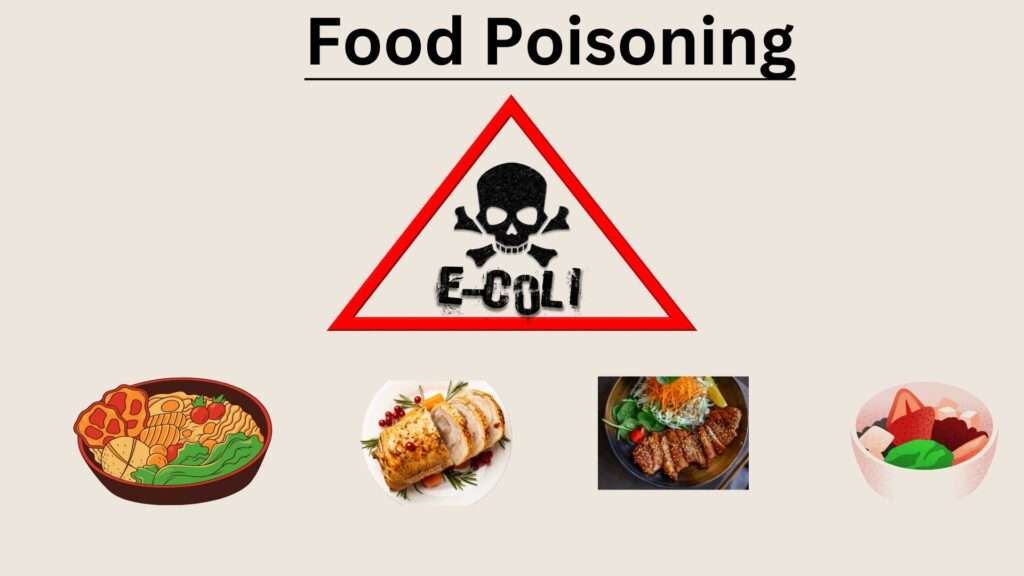food poisoning symptoms, cause and treatment
Food poisoning
Definition: Food poisoning is an acute gastro-enteritis caused by ingestion of food or drink contaminated with either living bacteria or their toxins of inorganic chemical substances and poisons derived from plants and animals.
The condition is characterized by:
- History of ingestion of a common food
- Attack of many persons at the same time and
- Similarity of signs and symptoms in the majority of cases.
We have described in article :
Symptoms of food poisoning
Causes of food poisoning
Investigations of food poisoning
Treatment of food poisoning
How to prevention food poisoning

Symptoms of Food Poisoning :
- Nausea
- Vomiting
- Headache
- Dizziness
- Watery diarrhea
- Abdominal pain and cramps
- Fever.
Investigations of Food poisoning :
- Culture of stool or vomit together with the suspected food.
- Blood culture in severe cases
Treatment of food poisoning :
A. Supportive of food poisoning treatment:
- Fluid and electrolyte replacement-oral or IV.
- Bowel sedation by Loperamide or Codeine phosphate.
- Stomach washes if chemical or poisonous food suspected.
B. Specific food poisoning treatment:
- Ciprofloxacin or trimethprim. If salmonella infections, suspected septicemia of severe prolonged symptoms.
- Erythromycin. If compylobacter infections.
Causes of food poisoning:
Non Bacterial : By certain plants sea food & chemicals, e.g. As, Hg, Cadmium, fertilizer, pesticides.
Infective:
- Non toxic mediated:
- Salmonella species.
- Campylobacter jejuni.
- Bacillus cereus.
- Bacillus anthracis
- .Viruses.
2. Toxin mediated:
- Staphylococcus aureus.
- Clostridium perfringens
- Clostridium botulinum. .
- E. coli
Non infective:
- Allergic:
- Shellfish
- Strawberries.
- Non-allergic:
Serombotoxin (fish).
- Ciguatoxin (tropical fish) .
- Fungi
- Chemicals,
- metals.
Preventive of food poisoning:
1) Food Sanitation :
- Meat inspection: The food animals must be free from infection. This can be ensure their examination by veterinary staff, both before and after slaughter.
- Personal hygiene: Among individuals engaged in the handling, preparation and cooking of food.
- Food handlers: Those suffering from infected wounds, boils, diarrhoea, dysentery, throat infection etc. should be excluded from food handling.
- Food handing techniques: The handling of ready to eat foods with bare hands should be reduced to a minimum. Time between preparation and consumption of food should be kept short. The importance of rapid cooling and cold storage must be stressed. Milk, milk products and egg products should be pasteurized. Food must be thoroughly cooked.
- Sanitary improvements: Sanitation of all work surfaces, utensils and equipments must be ensured Food premises should be kept free from rats ice, flies and dust.
- Health Education: Food handler should be educated about clean habit and personal hygiene.
2) Refrigeration of food:
In the prevention of bacterial food poisoning, emphasis must be placed on proper temperature control. Food should not be left in warm pantries Foods not eaten immediately should be kept in cold storage to prevent bacterial multiplication and toxin production. “Cook and eat the same day is a golden rule. Cold is bacteriostatic at temperature below 4°C, and refrigeration temperature should not exceed this level.
3) Surveillance :
Food samples must be obtained from the food establishments periodically and subjected to laboratory analysis if they were unsatisfactory Continuing surveillance is necessary to avoid outbreaks of food-borne diseases
